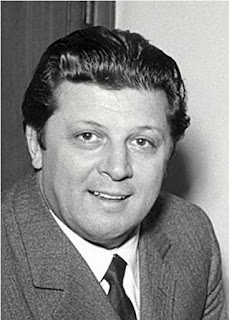Paolo Veronese – painter
Artist with a talent for using colour and painting people
A leading figure of the 16th century Venetian school of painting, the artist Paolo Veronese died on this day in 1588 in Venice. Veronese left a legacy of huge, colourful, paintings full of figures, which depicted allegorical, biblical or historical subjects. Much of his work remains in Venice to this day. A dominant figure during the Renaissance, Veronese has continued to inspire and be appreciated by many of the great artists who came after him, in particular Rubens, Watteau, Tiepolo and Renoir. Veronese was born in 1528, taking his grandfather’s surname of Caliari, but later adopting the surname Veronese, referencing his birthplace of Verona. He began training as an artist at the age of 14 with Antonio Badile, whose daughter, Elena, he later married. One of his early works, Temptation of St Anthony, painted in 1552 for the Cathedral in Mantua, shows the influence of Michelangelo. In 1553 he began working for the Venetian authorities on the decoration of the Palazzo Ducale. His skilful work on the ceiling of the Hall of the Council of Ten makes the figures appear to be actually floating in space. Read more...
_________________________________________________________
Antonio Carluccio - chef and restaurateur
TV personality and author began his career as a wine merchant
The chef, restaurateur and author Antonio Carluccio was born on this day in 1937 in Vietri-sul-Mare in Campania. An instantly recognisable figure due to his many television appearances, Carluccio moved to London in 1975 and built up a successful chain of restaurants bearing his name. He wrote 21 books about Italian food, as well as his autobiography, A Recipe for Life, which was published in 2012. Although born in Vietri, a seaside town between Amalfi and Salerno famous for ceramics, Carluccio spent most of his childhood in the north, in Borgofranco d'Ivrea in Piedmont. His father was a station master and his earliest memories are of running home from the station where his father worked to warn his mother that the last train of the day had left and that it was time to begin cooking the evening meal. Carluccio would join his father in foraging for mushrooms and wild rocket in the mountainous countryside near their home and it was from those outings that his interest in food began to develop, yet his career would at first revolve around wine. Having moved to Austria to study languages, he settled in Germany and between 1962 and 1975 was a wine merchant based in Hamburg. Read more…
_________________________________________________________
Canaletto - Venetian painter
Brilliant artist known for beautiful views of Venice
The Venetian artist Giovanni Antonio Canal – better known as Canaletto – died on this day in 1768 in the apartment in Venice in which he had lived for most of his life. He was 70 years old and according to art historian William George Constable he had been suffering from a fever caused by a bladder infection. His death certificate dated April 20 indicated that he died la notte scorsa all’ore 7 circa – ‘last night at about seven o'clock’. He was buried in the nearby church of San Lio in the Castello district, not far from the Rialto bridge. Canaletto was famous largely for the views he painted of his native city, although he also spent time in Rome and the best part of 10 years working in London. His work was popular with English visitors to Venice, in particular. In the days before photographs, paintings were the only souvenirs that tourists could take home to remind them of the city’s beauty. Unlike his contemporary, and sometime pupil, Francesco Guardi, whose paintings were a romanticised vision of the city, Canaletto did not feel the need to embellish what he saw. His works, therefore, were notable for their accuracy. Read more…
__________________________________________________________
Sara Simeoni - high jumper
Held world record and won Olympic gold
The high jumper Sara Simeoni, who is regarded as one of Italy’s greatest female athletes, was born on this day in 1953 in Rivoli Veronese, a village about 20km (12 miles) northwest of Verona. Only the second woman to clear two metres, she won the gold medal in her event at the Moscow Olympics of 1980, setting a Games record in the process. The Moscow Games was boycotted by 66 countries in protest at the Soviet invasion of Afghanistan, yet Simeoni, who competed under the Olympic flag after Italy left the issue of participation up to individual athletes, still deserved applause as the only winner in the women’s track and field programme not from an Eastern Bloc country. She confessed later that she suffered a panic attack just before the final in the Lenin Stadium and was physically sick, but then reminded herself that she was the world record holder and eventually beat the Polish jumper Urszula Kielan with a leap of 1.97m, an Olympic record. A great friend of the late Pietro Mennea, another 1980 Olympic champion from whom she drew inspiration, she had won the silver medal in Montreal in 1976 and did so again in Los Angeles in 1984. Read more…



























.jpg)
